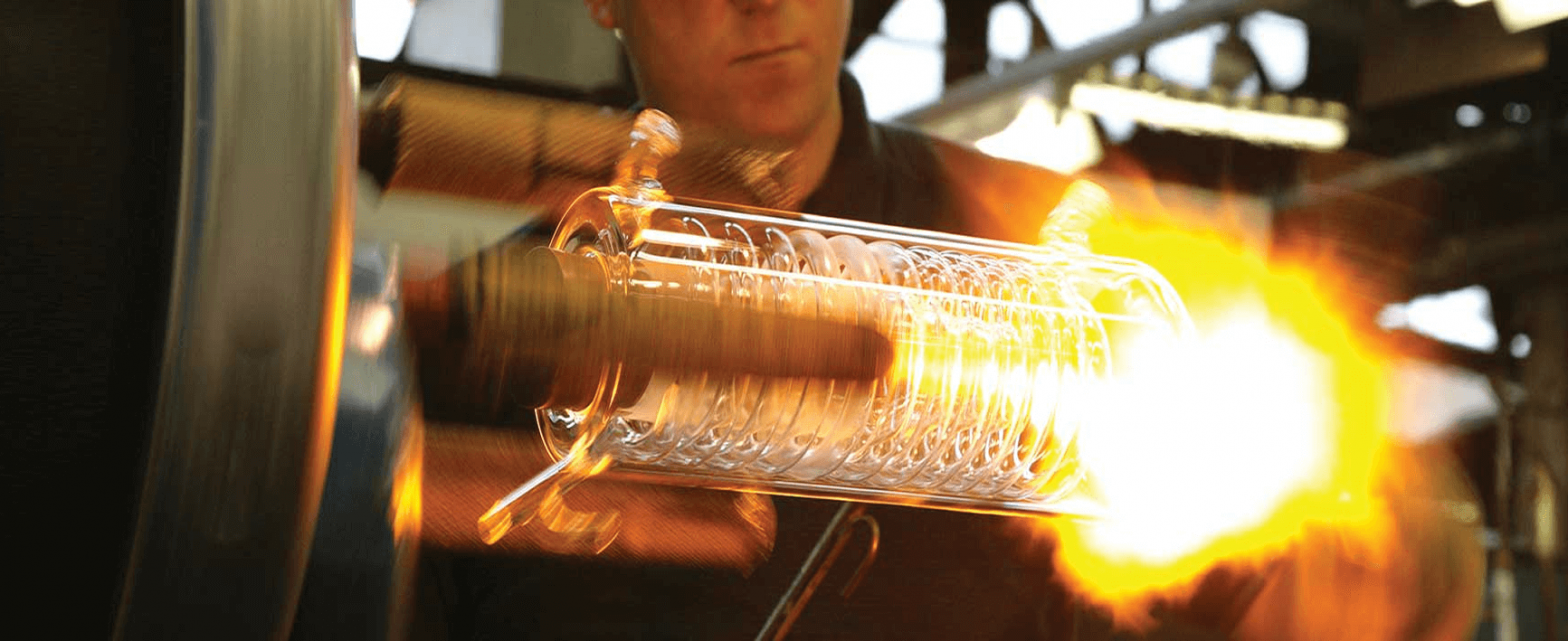Table of Contents
How Glass Fabrication Process Works
Glass Fabrication Process Swatik Scientific Glass Industries Not necessarily everything that we see around us that looks like the glass is actually made of glass. There are high chances it might be actually plastic or plastic-glass mixes. A lot of chemical compositions go into making these materials that look like glass and they can be termed as any number of hard, amorphous, inorganic, and uniform solids produced when fused molten materials are cooled fast enough to prevent crystallization.
However, the typical substances for glass fabrication are used in glassmaking are silicates, borates, and phosphates. Glass, however, trumps all of these materials when it comes to practical usage and needs as well.
Because of its strength and versatility, glass has near limitless applications. It is used extensively in construction, providing facing for most modern buildings and regular architectural glass features for most other habitable structures. It finds diverse uses in the home, whether as cookware, television screens, or light bulbs.
It is likely the single most important material in astronomy, which was originally made possible by the use of different glass lenses. Apart from these, it is fairly obvious that glass is also extensively used in labs, testing units, and other branches of science and chemistry because of its well-known longevity and structural toughness.
As time has progressed, glass has also found its way into the bio medics and optical industries and due to its unique properties, certain types of glass are used in integrated circuits. It also provides a reinforcing material for laminated plastics.
However, glass isn’t directly used in all of these industries. Sure, the material and the features of the end product remain the same, but the manner in which glass is used actually undergoes a few processes and tweaks before it is made available to the various industries.
One of those processes, very commonly heard but not necessarily known to people is that of fabrication. And that is what brings us to today’s topic, glass fabrication, and how it works.
Glass Fabrication: The Process

As you may all have come to understand, like any other long-drawn process, glass fabrication is also a tough nut to crack. We will try making it simple for you.
The ingredients that make up glass varies depending on the type of glass. The main component of glass, called the former, must be heated to a very high temperature to become viscous. The most common former is silicon dioxide, found in sand. The former is mixed with flux, which helps it to melt at a lower temperature. Common fluxes are soda ash and potash.
A stabilizer is also used to keep the glass from dissolving or forming unwanted crystal impurities. A common stabilizer is calcium oxide, from limestone. These dry ingredients are mixed together in a batch. A furnace melts the batch to form a liquid compound. Cullet, which is made up of broken glass, is added to the batch to help it melt.
The result of the melting process and the subsequent glass that is formed is called viscous glass. After it is melted, the viscous glass is then poured into a bath of molten tin, then formed into a ribbon and cooled. The slow and even cooling process is called annealing.
The glass must be cooled evenly because if one area stays hotter longer it becomes thicker, and the different levels of thickness result in stress on the piece of glass. It is important to note here that an improperly annealed piece of glass is more likely to crack.
Apart from how the fabrication system works, the glass industry also continues the process of fabrication forward with three other steps to follow it. These are glass cutting, where the annealed glass is cut using computer technology as per the required dimensions. After the glass is cut and shaped, manufacturers usually perform some glass polishing, laminating, and other finishing services. Polished mirrors and lenses make up a significant part of the glass fabrication market.
Glass Fabrication: The Industry
Glass fabrication is quite a widespread business all across India. Our main focus here will be on Gujarat, and more importantly, the city of Vadodara for the glass fabrication industry. Vadodara has become a mini glass hub over the past few years. A lot of new companies have popped up citing great opportunities whereas the ones pre-existent have become even more popular and expanded their services and presence to new heights. It has become a great place for the glass business to flourish and hence the glass fabrication process has been a great part of the glass fabrication industry development in Vadodara and Gujarat.
DGU Glass Fabrication Works:
Established in the year 2009, under the entity of Aaditya Innovators, DGU Glass Fabrication Works mainly deals with window glass fabrication and has become a leader in Vadodara for the same.
Their mentor, Prerak Shah has quickly become one of the major faces of the Gujarat glass business and has helped DGU Glass Fabrication Works become a leading name in the industry. The services offered by them are performed by highly qualified professionals using excellent grade tools and advanced technology.
Owing to its perfect execution and flawlessness, this service is widely appreciated by innumerable clients. Furthermore, all of these services are provided as per the requirements of the clients at a great rate.
There are other great companies at work in the glass fabrication industry in Gujarat as well, and it is seemingly going to grow to greater heights in the years to come. A very valuable piece of the entire glass fabrication industry, glass fabrication is deemed as an intangible aspect of the glass industry’s future.
Visit on – Swastik Scientific Glass Industries, Glass Fabrication Global Leader







